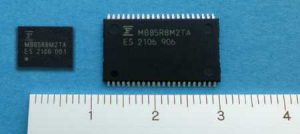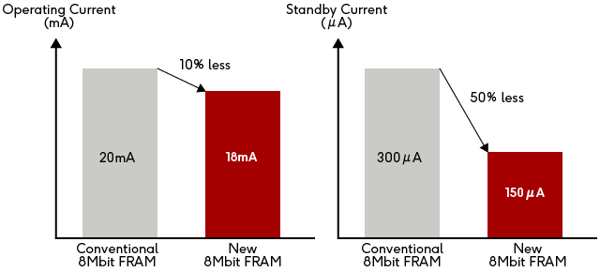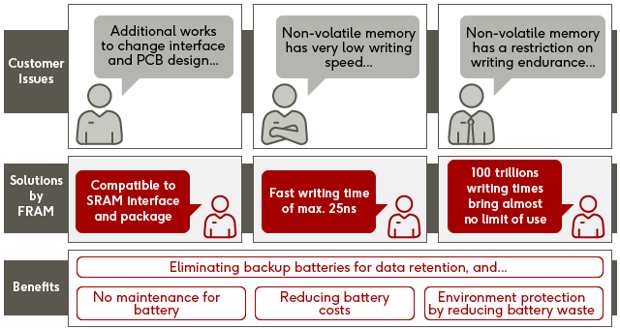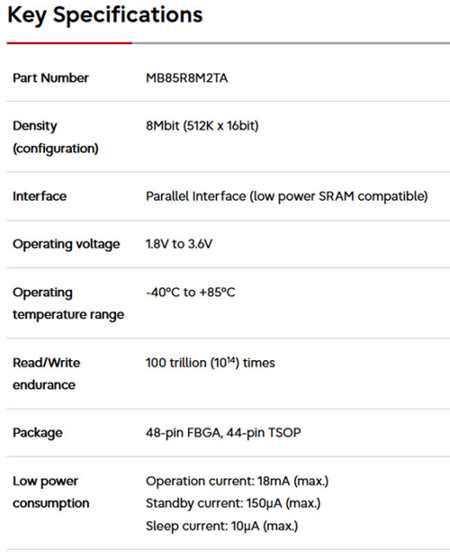Fujitsu: 8Mb FRAM MB85R8M2TA With Parallel Interface
100 trillion R/W cycle times, operation temperature from -40°C to 85°C
This is a Press Release edited by StorageNewsletter.com on December 3, 2021 at 2:01 pmFujitsu Semiconductor Memory Solution Ltd. has launched 8Mb FRAM MB85R8M2TA with parallel interface, which guarantees 100 trillion R/W cycle times in the company‘s FRAM product family.
MB85R8M2TA packages
FRAM is a non-volatile memory product with superior features of high R/W endurance, fast writing speed operation and low power consumption, and it has been mass-produced for over 20 years.
Example of FRAM usage
Fujitsu has been providing 8Mb FRAM MB85R8M2T with parallel interface since June 2018. While promoting the product, the company heard voices of customer requirements such as guaranteed writing endurance of more than ten trillion times, operation as fast as SRAM and TSOP package compatibility to SRAM. The company introduced its 8Mbit FRAM product satisfying these requirements, maintaining FRAM’s feature of lower power consumption.
Current comparison
The MB85R8M2TA with an SRAM-compatible parallel interface operates at a range of power supply voltage from 1.8V to 3.6V. Being capable of operating up to 25ns in fast page mode, the FRAM’s access speed is as high as SRAM at continuous data transfer. It achieves both high-speed operations, approximately 30% faster access speed, and low power consumption, 10% less operating current, compared to the firm’s conventional products. This memory IC is a replacement of SRAM in the industrial machines that require high-speed operation.
From the above features, the 8Mb FRAM brings customers the benefit of eliminating a data-backup battery necessary for SRAM in some cases.
Issues and solutions when replacing SRAM with non-volatile memory
The memory solution is committed to contribution to sustainable society while developing performance products. As an example, the firm continues working on the development of low-power consumption FRAM products. With the reduction of power consumption, it aims to reduce CO² emissions for less greenhouse gas.



















 Subscribe to our free daily newsletter
Subscribe to our free daily newsletter


